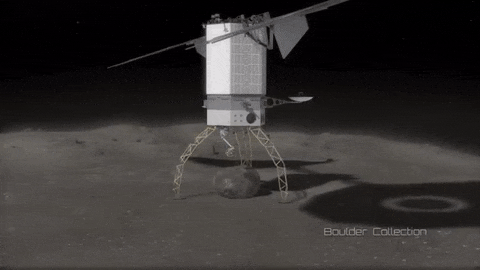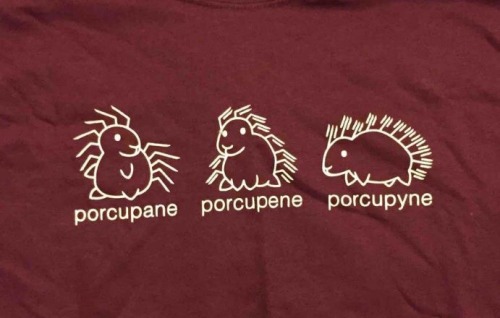Gaming, Science, History, Feminism, and all other manners of geekery. Also a lot of dance
243 posts
Latest Posts by stubborn-turtle-blog - Page 5
Squishy physics!
How physicists see other fields:
Biology: squishy physics
Geology: slow physics
Computer Science: virtual physics
Psychology: people physics
Chemistry: impure physics
Math: physics without units
Constellations and the Calendar
Did you recently hear that NASA changed the zodiac signs? Nope, we definitely didn’t…
…Here at NASA, we study astronomy, not astrology. We didn’t change any zodiac signs, we just did the math. Here are the details:
First Things First: Astrology is NOT Astronomy…
Astronomy is the scientific study of everything in outer space. Astronomers and other scientists know that stars many light years away have no effect on the ordinary activities of humans on Earth.
Astrology is something else. It’s not science. No one has shown that astrology can be used to predict the future or describe what people are like based on their birth dates.

Some curious symbols ring the outside of the Star Finder. These symbols stand for some of the constellations in the zodiac. What is the zodiac and what is special about these constellations?

Imagine a straight line drawn from Earth though the sun and out into space way beyond our solar system where the stars are. Then, picture Earth following its orbit around the sun. This imaginary line would rotate, pointing to different stars throughout one complete trip around the sun – or, one year. All the stars that lie close to the imaginary flat disk swept out by this imaginary line are said to be in the zodiac.

The constellations in the zodiac are simply the constellations that this imaginary straight line points to in its year-long journey.
What are Constellations?
A constellation is group of stars like a dot-to-dot puzzle. If you join the dots—stars, that is—and use lots of imagination, the picture would look like an object, animal, or person. For example, Orion is a group of stars that the Greeks thought looked like a giant hunter with a sword attached to his belt. Other than making a pattern in Earth’s sky, these stars may not be related at all.

Even the closest star is almost unimaginably far away. Because they are so far away, the shapes and positions of the constellations in Earth’s sky change very, very slowly. During one human lifetime, they change hardly at all.
A Long History of Looking to the Stars
The Babylonians lived over 3,000 years ago. They divided the zodiac into 12 equal parts – like cutting a pizza into 12 equal slices. They picked 12 constellations in the zodiac, one for each of the 12 “slices.” So, as Earth orbits the sun, the sun would appear to pass through each of the 12 parts of the zodiac. Since the Babylonians already had a 12-month calendar (based on the phases of the moon), each month got a slice of the zodiac all to itself.

But even according to the Babylonians’ own ancient stories, there were 13 constellations in the zodiac. So they picked one, Ophiuchus, to leave out. Even then, some of the chosen 12 didn’t fit neatly into their assigned slice of the pie and crossed over into the next one.

When the Babylonians first invented the 12 signs of zodiac, a birthday between about July 23 and August 22 meant being born under the constellation Leo. Now, 3,000 years later, the sky has shifted because Earth’s axis (North Pole) doesn’t point in quite the same direction.

The constellations are different sizes and shapes, so the sun spends different lengths of time lined up with each one. The line from Earth through the sun points to Virgo for 45 days, but it points to Scorpius for only 7 days. To make a tidy match with their 12-month calendar, the Babylonians ignored the fact that the sun actually moves through 13 constellations, not 12. Then they assigned each of those 12 constellations equal amounts of time.
So, we didn’t change any zodiac signs…we just did the math.
Make sure to follow us on Tumblr for your regular dose of space: http://nasa.tumblr.com




Elevated walkway and visitor centre added to 12th century abbey ruins by Binario Architectes »
Superhenge?
Last year, an international team of scientists mapping the underground landscape surrounding Stonehenge announced that they had located a massive stone monument that dwarfed its ancient neighbor. When archaeologists started excavating “Superhenge” earlier this month, however, they found something completely different.

Keep reading

This is the Bandigara Escarpment, in Mali. Although the cliffs have been inhabited since the 200s BCE, the present inhabitatants, the Dogon, have been in the rock-perched houses since the 1300s CE. The cliffs offer protection, cooler air, and a safe place to bury the dead. The valley below is prone to flash floods. This means building houses there, and burying dead there, is a risky proposition. The Dogon decided the risk was not worth it, and drove out the former inhabitants of the Bandigara Escarpment. Since the 1300s they have lived at Bandigara in relative peace.
Eugenics was massive in the US, however much we pretend it wasn't
The U.S. Supreme Court in 1927 decided, by a vote of 8 to 1, to uphold a state’s right to forcibly sterilize a person who was deemed unfit to procreate. The case Buck v. Bell legitimized the eugenics movement – yes, the thing Hitler and the Nazis believed in – and directly led to the sterilizing of 70,000 American citizens against their will.
And the dancer notes the ballroom














$1,200,000/11 br
Weatherford, TX
How is the source for this returnofkings, a MRA site?
If men stopped working…the world would continue on.
If women stopped working, then things would get ugly.
Very important to keep in mind when you've hit a plateau in anything
Improving Your Relationship With the Person in the Mirror - Dance Comp Review
New Post has been published on http://dancecompreview.com/improving-your-relationship-with-the-person-in-the-mirror/
Improving Your Relationship With the Person in the Mirror
Do you hate looking at yourself on film or in the mirror? Are you always focusing on what you need to improve, without taking pride in your accomplishments? If you answered yes to either of the above, you may want to make some changes to how you perceive yourself.
An often overlooked part of learning to dance is the importance of staying conscious, not only of what you need to improve, but also of the progress you’ve made. Without this balance, many dancers develop or reinforce negative beliefs about themselves, which may have no basis in reality.
It’s important to remember that what we see is often coloured by the opinions we already hold about ourselves. A person who believes they are fat for example, is likely to still hold that belief even after loosing 50 pounds. In order to develop a more healthy relationship with yourself, you first need to change these limiting beliefs.
Giphy
First: Is the mirror distorted?
Sometimes, it really is the mirror’s fault! A warped mirror can make people appear bigger or smaller, create the impression that they are not balanced well, or make correct technique look strange. Before reading on, try remembering if there is certain mirrors you tend to like dancing in front of more than others, and why.
Giphy
Is your perception of yourself distorted?
This is by far the more likely situation. There’s nothing wrong with wanting to improve yourself of course, and you can’t do that without being aware of what you want to correct. But this can work against you when the self-criticism becomes demoralizing, when it starts to hurt your self-esteem and self-perception.
You might have a distorted perception of yourself if:
You receive compliments about your dancing with skepticism.
You find yourself focusing on the flaws in your appearance and technique, and ignoring what looks good.
You complain frequently about how bad a dancer you are.
You often leave a practice feeling sad, depressed, or angry at yourself.
If a performance or competition goes well, you assume you just ‘got lucky’.
You hang around other dancers or people who complain about themselves a lot.
You spend a lot of money on your appearance, and it still doesn’t seem like enough.
You use words like ‘always’ and ‘never’ when critiquing yourself (ex. ‘I always screw up X, I’ll never get it right.’)
You take constructive criticism very personally.
You quickly give up if a practice isn’t going well.
You feel like this article is telling you to stop working hard.
You compare yourself unfavourably to others
Giphy
If you want to start creating a more positive (and honest) image of yourself, try these tips:
Find at least one thing you did well after each practice. Thank yourself for doing it well.
Ask your instructor to let you know where you’ve made progress, and trust their opinion! Remember that they are the experts.
Ask yourself why you feel fat, clumsy, etc., and using only hard facts, what you know that backs that up. Compare that to why you might be the opposite.
Imagine yourself as a champion dancer. Think of how this person would walk, talk, feel, and dance. Practice being this person in your daily life.
Write down an empowering sentence about yourself, and repeat it daily. For example: ‘Every day, I am becoming a more skilled and competent dancer.’
Make a plan with your instructor, and set some concrete goals you can measure your progress by.
Smile more! Studies show just by smiling, you can trick your body into feeling happier, which boosts your self-confidence.
Stop comparing yourself to anyone but yourself from 24 hours ago.
Practice letting go of your mistakes, either by making it funny, or quickly refocusing on the next movement.
Reward yourself after doing something well, even if only by allowing yourself to feel a little pride.
Surround yourself with positive people.
These mental hacks will allow you to start seeing yourself in a better light. And that in turn, will help you find the motivation you need to become the dancer of your dreams. Go get ‘em!
Author: Ian Crewe Photography: Pavel Yuryev Exclusively for Dance Comp Review
The Forgotten Earthquakes
On July 28th, 1976, two earthquakes hit in China, near the city of Tangshan. They were just 100 miles from Beijing. Tangshan was a city of 1 million that was almost completely destroyed in a day. Beijing’s port city, Tianjin, was also hit as was parts of the capital Beijing. Although the death toll was never confirmed by Chinese authorities, it may have exceeded 700,000. That would easily make the Tangshan earthquakes the most deadly natural catastrophe of the 1900s.
China at the time was still reeling from the aftermath of its decade-long and ultimately pointless “Cultural Revolution.” The response to the earthquakes was incompetent, ineffective, and corrupt. It directly led to more deaths and more suffering. Word of the earthquake and the terrible relief effort spread throughout China. In whispers, of course, since counterrevolutionaries were and are still arrested when the crime is nothing more than speaking a unhappy truth about the government. Already in poor health, Mao died just six weeks after Tangshan. And suddenly that and the ensuing power struggle were all that was talked about. The largest natural disaster of a century, and it is not taught or remembered.
Using the Power of Space to Fight Cancer
From cancer research to DNA sequencing, the International Space Space is proving to be an ideal platform for medical research. But new techniques in fighting cancer are not confined to research on the space station. Increasingly, artificial intelligence is helping to “read” large datasets. And for the past 15 years, these big data techniques pioneered by our Jet Propulsion Laboratory have been revolutionizing biomedical research.
Microgravity Research on Space Station
On Earth, scientists have devised several laboratory methods to mimic normal cellular behavior, but none of them work exactly the way the body does. Beginning more than 40 years ago aboard Skylab and continuing today aboard the space station, we and our partners have conducted research in the microgravity of space. In this environment, in vitro cells arrange themselves into three-dimensional groupings, or aggregates. These aggregates more closely resemble what actually occurs in the human body. Cells in microgravity also tend to clump together more easily, and they experience reduced fluid shear stress – a type of turbulence that can affect their behavior. The development of 3D structure and enhanced cell differentiation seen in microgravity may help scientists study cell behavior and cancer development in models that behave more like tissues in the human body.

In addition, using the distinctive microgravity environment aboard the station, researchers are making further advancements in cancer therapy. The process of microencapsulation was investigated aboard the space station in an effort to improve the Earth-based technology. Microencapsulation is a technique that creates tiny, liquid-filled, biodegradable micro-balloons that can serve as delivery systems for various compounds, including specific combinations of concentrated anti-tumor drugs. For decades, scientists and clinicians have looked for the best ways to deliver these micro-balloons, or microcapsules, directly to specific treatment sites within a cancer patient, a process that has the potential to revolutionize cancer treatment.

A team of scientists at Johnson Space Center used the station as a tool to advance an Earth-based microencapsulation system, known as the Microencapsulation Electrostatic Processing System-II (MEPS-II), as a way to make more effective microcapsules. The team leveraged fluid behavior in microgravity to develop a new technique for making these microcapsules that would be more effective on Earth. In space, microgravity brought together two liquids incapable of mixing on Earth (80 percent water and 20 percent oil) in such a way that spontaneously caused liquid-filled microcapsules to form as spherical, tiny, liquid-filled bubbles surrounded by a thin, semipermeable, outer membrane. After studying these microcapsules on Earth, the team was able to develop a system to make more of the space-like microcapsules on Earth and are now performing activities leading to FDA approval for use in cancer treatment.

In addition, the ISS National Laboratory managed by the Center for the Advancement of Science in Space (CASIS) has also sponsored cancer-related investigations. An example of that is an investigation conducted by the commercial company Eli Lilly that seeks to crystallize a human membrane protein involved in several types of cancer together with a compound that could serve as a drug to treat those cancers.
“So many things change in 3-D, it’s mind-blowing – when you look at the function of the cell, how they present their proteins, how they activate genes, how they interact with other cells,” said Jeanne Becker, Ph.D., a cell biologist at Nano3D Biosciences in Houston and principal investigator for a study called Cellular Biotechnology Operations Support Systems: Evaluation of Ovarian Tumor Cell Growth and Gene Expression, also known as the CBOSS-1-Ovarian study. “The variable that you are most looking at here is gravity, and you can’t really take away gravity on Earth. You have to go where gravity is reduced."
Crunching Big Data Using Space Knowledge

Our Jet Propulsion Laboratory often deals with measurements from a variety of sensors – say, cameras and mass spectrometers that are on our spacecraft. Both can be used to study a star, planet or similar target object. But it takes special software to recognize that readings from very different instruments relate to one another.
There’s a similar problem in cancer research, where readings from different biomedical tests or instruments require correlation with one another. For that to happen, data have to be standardized, and algorithms must be “taught” to know what they’re looking for.
Because space exploration and cancer research share a similar challenge in that they both must analyze large datasets to find meaning, JPL and the National Cancer Institute renewed their research partnership to continue developing methods in data science that originated in space exploration and are now supporting new cancer discoveries.
JPL’s methods are leading to the development of a single, searchable network of cancer data that researcher can work into techniques for the early diagnosis of cancer or cancer risk. In the time they’ve worked together, the two organizations’ efforts have led to the discovery of six new Food and Drug Administration-approved cancer biomarkers. These agency-approved biomarkers have been used in more than 1 million patient diagnostic tests worldwide.
Make sure to follow us on Tumblr for your regular dose of space: http://nasa.tumblr.com
I want to see an adventure story set in medieval Bologna
Or Assassin's Creed



The city of Bologna in the 12th-13th century - the closest we can get to a medieval skyscraper city; because nobles used to build high towers as a symbol of power and also for offensive/defensive purposes, at one point there were around 100 such towers.
Keep reading
Mission Possible: Redirecting an Asteroid
As part of our Asteroid Redirect Mission (ARM), we plan to send a robotic spacecraft to an asteroid tens of millions of miles away from Earth, capture a multi-ton boulder and bring it to an orbit near the moon for future crew exploration.

This mission to visit a large near-Earth asteroid is part of our plan to advance the new technologies and spaceflight experience needed for a human mission to the Martian system in the 2030s.
How exactly will it work?
The robotic spacecraft, powered by the most advanced solar electric propulsion system, will travel for about 18 months to the target asteroid.

After the spacecraft arrives and the multi-ton boulder is collected from the surface, the spacecraft will hover near the asteroid to create a gravitational attraction that will slightly change the asteroid’s trajectory.

After the enhanced gravity tractor demonstration is compete, the robotic vehicle will deliver the boulder into a stable orbit near the moon. During the transit, the boulder will be further imaged and studied by the spacecraft.

Astronauts aboard the Orion spacecraft will launch on the Space Launch System rocket to explore the returned boulder.

Orion will dock with the robotic vehicle that still has the boulder in its grasp.

While docked, two crew members on spacewalks will explore the boulder and collect samples to bring back to Earth for further study.

The astronauts and collected samples will return to Earth in the Orion spacecraft.
How will ARM help us send humans to Mars in the 2030s?

This mission will demonstrate future Mars-level exploration missions closer to home and will fly a mission with technologies and real life operational constraints that we’ll encounter on the way to the Red Planet. A few of the capabilities it will help us test include:
Solar Electric Propulsion – Using advanced Solar Electric Propulsion (SEP) technologies is an important part of future missions to send larger payloads into deep space and to the Mars system. Unlike chemical propulsion, which uses combustion and a nozzle to generate thrust, SEP uses electricity from solar arrays to create electromagnetic fields to accelerate and expel charged atoms (ions) to create a very low thrust with a very efficient use of propellant.
Trajectory and Navigation – When we move the massive asteroid boulder using low-thrust propulsion and leveraging the gravity fields of Earth and the moon, we’ll validate critical technologies for the future Mars missions.
Advances in Spacesuits – Spacesuits designed to operate in deep space and for the Mars surface will require upgrades to the portable life support system (PLSS). We are working on advanced PLSS that will protect astronauts on Mars or in deep space by improving carbon dioxide removal, humidity control and oxygen regulation. We are also improving mobility by evaluating advances in gloves to improve thermal capacity and dexterity.
Sample Collection and Containment Techniques – This experience will help us prepare to return samples from Mars through the development of new techniques for safe sample collection and containment. These techniques will ensure that humans do not contaminate the samples with microbes from Earth, while protecting our planet from any potential hazards in the samples that are returned.
Rendezvous and Docking Capabilities – Future human missions to Mars will require new capabilities to rendezvous and dock spacecraft in deep space. We will advance the current system we’ve developed with the international partners aboard the International Space Station.
Moving from spaceflight a couple hundred miles off Earth to the proving ground environment (40,000 miles beyond the moon) will allow us to start accumulating experience farther than humans have ever traveled in space.
Make sure to follow us on Tumblr for your regular dose of space: http://nasa.tumblr.com

After the devastating earthquake in Amatrice, Italy, on August 24th, the Vigili del Fuoco (Italian fire brigade) requested assistance from the TRADR (Long-Term Human-Robot Teaming for Robot-Assisted Disaster Response) project (EU FP7 framework, grant No. 60963). TRADR deployed two Unmanned Ground Vehicles (UGVs) and three Unmanned Aerial Vehicles (UAVs) to assist the post-earthquake response in Amatrice.
The task was to use robots to provide 3D textured models of two churches, San Francesco and Sant’ Agostino, national heritage monuments from the XIVth century. Both were in a state of partial collapse and in need of shoring to prevent potential further destruction. The models should serve to plan the shoring operations and to assess the state of various objects of cultural value inside the churches, such as valuable frescos.
The UGVs successfully entered the San Francesco church, teleoperated entirely out of line of sight and partially in collaboration. For part of the mission, one UGV provided a view of the other one to enable maneuvering in very constrained space with low connection bandwidth. One of the UGVs operated in the church continuously for four hours. A UAV was also present for a short time in parallel and provided additional views of the UGVs.
The amazing unfinished and abandoned 1000 ton Egyptian Obelisk
The largest known Egyptian obelisk is called the “unfinished obelisk”, which today can be found exactly where it was once semi-carved from the solid bedrock. This stone block was intended to be a 120ft tall obelisk. It is estimated that a block of granite this size would easily weigh more than a 1000 tons, some geologists have suggested a figure in the region of 1100 tons – 1150 tons.
Keep reading
Like Britain, Seattle also takes it as a sign of weakness to use an umbrella

In the early 1750s, an Englishman by the name of Jonas Hanway, lately returned from a trip to France, began carrying an umbrella around the rainy streets of London. People were outraged. Some bystanders hooted and jeered at Hanway as he passed; others simply stared in shock. Hanway was the first man to parade an umbrella unashamed in 18th-century England, a time and place in which umbrellas were strictly taboo. In the minds of many Brits, umbrella usage was symptomatic of a weakness of character, particularly among men. The British also regarded umbrellas as too French—inspired by the parasol, a Far Eastern contraption that for centuries kept nobles protected from the sun, the umbrella had begun to flourish in France in the early 18th century when Paris merchant Jean Marius invented a lightweight, folding version that, with added waterproofing materials, could protect users from rain and snow. In 1712, the French Princess Palatine purchased one of Marius’s umbrellas; soon after, it became a must-have accessory for noblewomen across the country. Later British umbrella users reported being called “mincing Frenchm[e]n” for carrying them in public.
I feel like this belongs in a more futuristic animated movie






Bolles + Wilson. Suzuki House. Tokyo. Japan. photos/ drawing: Ryuji Miyamoto/ Bolles + Wilson. - architecture classic

Science marches on, and our understanding of dinosaurs is constantly being updated.
And, sometimes, it’s funny how certain changes seem to be accepted by the general public easier than others.
Could be nothing, could be a really bad something
Asteroid Terms: Explained
There are interesting asteroid characters in our solar system, including an asteroid that has its own moon and even one that is shaped like a dog bone! Our OSIRIS-REx mission launches at 7:05 p.m. EDT today and will travel to asteroid Bennu.

Scientists chose Bennu as the target of the OSIRIS-REx mission because of its composition, size and proximity to Earth. Bennu is a rare B-type asteroid (primitive and carbon-rich), which is expected to have organic compounds and water-bearing minerals like clays.
Our OSIRIS-REx mission will travel to Bennu and bring a small sample back to Earth for study.

When talking about asteroids, there are some terms scientists use that might not be in your typical vocabulary…but we’ll help with that!
Here are a few terms you should know:
Orbital Eccentricity: This number describes the shape of an asteroid’s orbit by how elliptical it is. For asteroids in orbit around the sun, eccentricity is a number between 0 and 1, with 0 being a perfectly circular orbit and 0.99 being a highly elliptical orbit.
Inclination: The angle, in degrees, of how tilted an asteroid’s orbit is compared to another plane of reference, usually the plane of the Earth’s orbit around the sun.
Orbital Period: The number of days it takes for an asteroid to revolve once around the sun. For example, the Earth’s orbital period is 365 days.
Perihelion Distance: The distance between an asteroid and the sun when the asteroid is closest to the sun.
Aphelion Distance: The distance between the asteroid and the sun when the asteroid is farthest away from the sun.
Astronomical unit: A distance unit commonly used to describe orbits of objects around the sun. The distance from the Earth to the sun is one astronomical unit, or 1 AU, equivalent to about 93 million miles or 150 million kilometers.
Diameter: A measure of the size of an asteroid. It is the length of a line from a point on the surface, through the center of the asteroid, extending out to the opposite surface. Irregularly shaped asteroids may have different diameters depending on which direction they are measured.
Rotation Period: The time it takes for an asteroid to complete one revolution around its axis of rotation. For example, the rotation period of the Earth is approximately 24 hours, or 1 day.
Spectral Type: The classification of an asteroid, based on a measurement of the light reflected by the asteroid.

Watch live launch coverage of OSIRIS-REx to asteroid Bennu starting at 5:30 p.m, on NASA TV: http://www.nasa.gov/nasatv
Make sure to follow us on Tumblr for your regular dose of space: http://nasa.tumblr.com
New Evidence Found which Matches Legendary Founding of the First Dynasty of China
A archaeological team from Beijing University have found new evidence that surprisingly fits the ancient Chinese histories’ accounts of the founding of the Xia Dynasty. Previously, historians had dismissed all accounts of the first, second, and third dynasties as fabrications. They were written to glorify the dynasties which came later, not to document what had really happened. But archaeological findings over the last century provided evidence that the second and third dynasties had really existed. The Shang Dynasty you likely heard about in schools. Yup, we had once thought it was a myth. Now science and archaeology may be confirming the earliest dynasty written about existed as well. Read more



























